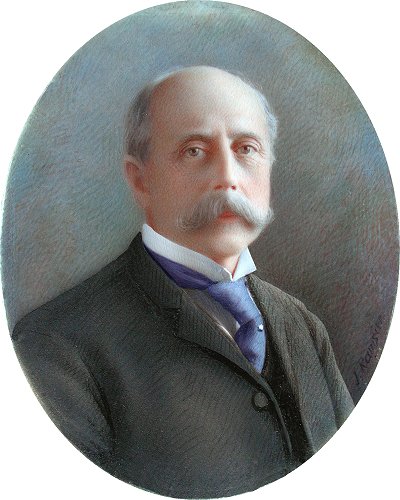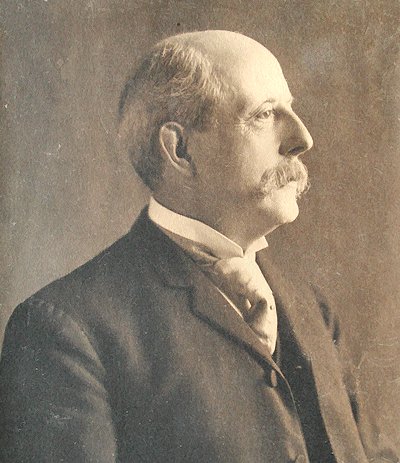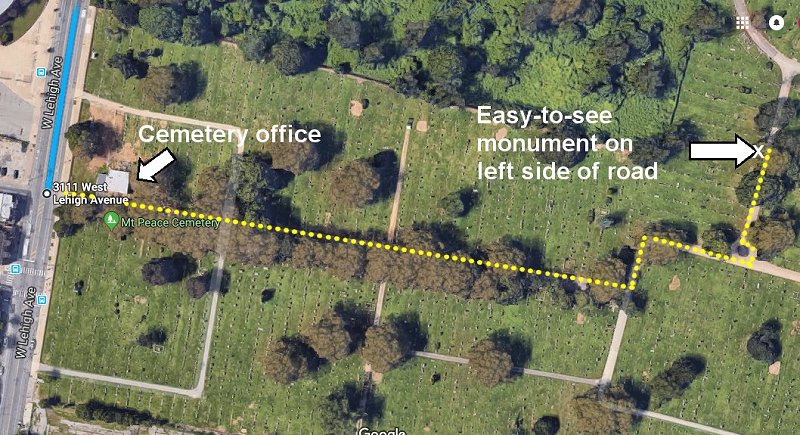Charles E. Barber
 |
 |
 |
Charles E. Barber was the 6th Chief Engraver of the United States, and the namesake of the Barber Coin Collectors' Society.
He succeeded his father, William Barber, after his death in 1879, appointed to the position by President Rutherford B. Hayes. He is best known for his Liberty Head coins, commonly called Barber dimes, quarters, and half dollars, along with the Liberty or "V" nickel.
Charles was born in London England in 1840, to William and Anna Maria Barber, and had a brother and two sisters. In 1852, his family moved to the United States, and when William was hired as an assistant engraver by Chief Engraver James B. Longacre in 1865, the family moved to Philadelphia. Charles, who learned the art of engraving from his father, was hired as an assistant at the Mint in 1869, and becoming Chief Engraver in 1880. He would remain in that position until his death in 1917. Charles Barber married Martha E. Jones. They had an infant daughter late in 1875 named Anna May, named for Barber's mother, but unfortunately the baby died the next year. Ten years later, Charles and Martha had another daughter named Edith (1886-1970). Fortunately Edith preserved the extensive family archives and artifacts of both her father and grandfather, William Barber. Martha Barber died in January 1899, and in 1902 Charles remarried, and was married to Caroline Gaston Barber (1846-1950) until his death.
| |
Barber coins proved to be workhorses in the economy. The nuances in both the design and engraving allowed them to be used for many years, still being easily identifiable even with extensive wear, unlike some other designs, both prior and afterward. He was a student in coin manufacturing, and understood the entire process of making coins, and sought continuous improvement. Traveling to Europe in 1905 on a fact-finding and information-sharing mission to European mints, Barber discussed all aspects of coin-making, contrasting the U.S. methods with those overseas. He was hoping to identify the best practices, and make adjustments back home, where appropriate. This included coin metullurgy, refining, die-making, machinery, press settings, etc.

Barber's U.S. coin designs
In addition to circulating coins, Barber designed many patterns and medals over his long career. As a collector, he built a large and renowned collection of patterns, and a medal collection as well. Anchoring both collections were medals designed by either himself, or his father, William Barber, the 5th Chief Engraver of the U.S. Mint.

Assortment of patterns and medals designed by Charles Barber
Charles Barber also designed, under contract with the mint, coins for other countries. He designed the 1883 coinage for the Kingdom of Hawaii (before it became a U.S. Territory), the silver Cuba coinage beginning 1915, and also the 1897 coinage of Szechuan Province in China. In addition, he assisted Filipino Melicio Figueroa with the designs for Phillippines coinage beginning 1903.

Barber-designed coins for foreign countries
|
In 2018, the BCCS came into contact with two of the great-grandsons of Charles Barber, and the period following this meeting was one of great discovery. Much was learned about the Barbers using the family archives, including the discovery of many new photos of them. With the support of their descendants, the BCCS has published a new set of images for both Charles and William Barber. They are available for use in various formats, sizes, and resolutions.
See these new images at the Charles and William Barber images page.
Because numerous personal aspects about Barber were relatively unknown prior to 2018, many myths about Barber have proliferated through the numismatic world, most of them unflattering, and as it turns out, also untrue. A widespread belief that Barber and George T. Morgan didn't get a long (some say they had a feud) has been conclusively disproven. Quite to the contrary, they appear to have had a close and friendly personal relationship, which makes complete sense because they worked closely together for over 40 years! And they did many projects together, including designing commemorative coins, medals, and even testing minting equipment.
Also disproven is the belief that President Theodore Roosevelt disliked Barber (some think he wanted to replace him). Specific artifacts in the possession of the family demonstrate that Roosevelt had a warm personal relationship with Barber, even though Roosevelt wanted to look outside the mint staff entirely for new design ideas for our coins in the new century, starting with Bela Lyon Pratt and Augustus Saint-Gaudens for our gold coinage. |
 |
 |

Two of many Barber-Morgan collaborations
Charles Barber died on February 18, 1917, at the age of 76, after nearly 50 years at the mint. As a demonstration of how much Charles Barber was both liked and respected by his peers and superiors, the flags at the Philadelphia mint were lowered to half staff on the day of his funeral. The National Archives possesses the letter written by the Mint Director in Washington requesting permission to do that. As it turns out, Charles E. Barber is the last mint official of any rank to receive that high honor.
He was interred at Mount Peace cemetery at 3111 West Lehigh Avenue in Philadelphia. He is buried with his first wife Martha, and their infant daughter, Anna May (1875-1876). His gravesite is easy to find, but you can always stop at the cemetery office just inside the entrance, and somebody will show you his plot and marker. Below is a finder map to his gravesite, which is just off the road.
Locator map of Mount Peace Cemetery showing Charles Barber's gravesite
 
Gravesite of Charles E. Barber, Martha Barber, and infant Anna May Barber
 
|





